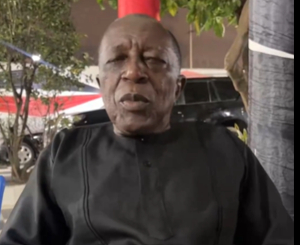…From Gambaga to Accra, from Wiaso to Keta we should all be each other’s keeper. This includes sharing ideas and many more. This benefits each and every one of us even if we do not notice it immediately.
I have come to the realization that sometimes the little things in life that we take for granted make a lot of difference in our lives: today take a moment to walk in a garden or take a stroll outdoors; enjoy the scenes and feel the breeze. You do not always have to ride in a car and stay in an air-conditioned room. Go out there and make a child smile.
Of all the things I have studied in life, the one that has impacted my life the most is Literature in English. This comes from a science student who did not appreciate this wonderful subject till three weeks before my final exam. Yes, I was virtually in tears after writing my final paper in this subject and that is very much unlike me. Well if you have the opportunity, study this subject or encourage someone else to.
Unlike the unhappy ending to my short-lived romance with Literature in English, I am making sure I can impart knowledge on keeping healthy in a “healthy way” to as many people as possible and for as long as my maker permits me. I strongly believe that your visit to a doctor or any health professional is incomplete without a FITT prescription. Note that this is no typographical error.
FITT is an acronym for important aspects that should be stressed for EVERYONE’S exercise programme. F – Frequency of your exercise, I – Intensity, T – Type and T – Time or duration of the exercise.
Quite often we get carried away and our whole exercise world crushes because we are caught in the terrible web of “toos” – we exercise too often, too much, too quickly and too intensely. We either injure ourselves or burn-out and that may be the end of our story.
1. F – Frequency. How often should one exercise?
a. The World Health Organization recommends 150 minutes a week. This is the barest minimum but if you have not been exercising already or have a medical condition please start slowly. If you start with 30 minutes a week and remain consistent, you will surely improve over time
b. At least 5 days a week is good. Been found that more is better but to avoid exercise fatigue I will not encourage 7days a week especially if the exercise is intense.
2. I – Intensity; How intense should exercising be?
a. It is recommended that we engage in mild to moderate intensity exercising. Extremely intense exercise may not be ideal for most of us. Risk of injury increases and our immunity may actually drop at high intensities.
b. An easy way to gauge intensity is to be able to carry on a conversation as you exercise – The Talk Test.
c. Moderate exercising includes; brisk walking, household cleaning, golfing and dancing
3. T – Time or duration of exercise.
a. 30 minutes a day is great but you may start with less and build it up. The good news is you may even break the 30 minutes into 10 minute sessions and still get significant benefits.
b. In many situations including fat loss, and improving cardiovascular health, it may be worthwhile to increase duration to 45 – 60 minutes over time. Beyond 60 minutes, the benefits are no longer significant and I will not advise that.
4. T – Type of Exercise. This is extremely important as well since many of us tend to fixate on one type of exercise to our own detriment
a. Should one do Aerobic Exercise such as walking etc. certainly if our doctor gives you the green light
b. Strength Training such as using weights, bands or your own bodyweight is a vital part of keeping healthy. You need those muscles to lift, support your body and even strengthen your bones. Males and females, old and young all benefit from strength training.
c. Flexibility Training also helps us avoid injuries and increase the range we can move weights through. We also get the added benefit of reducing stiffness in our joints.
d. Finally with a continuously aging population what could be better than “preparing” to avoid falls. Stability Training / Balance Exercise comes in here. This is a fairly new area and you should get help and start cautiously.
So next time you visit you doctor ask for your FITT Prescription because certainly it has the power to keep you alive and happy.
Remember that most of us reading this article will die from a cardiovascular disease: stroke, heart attack, heart failure, other complications of hypertension and many more. Exercise if done correctly such as in following the FITT Principle has the power to save a world that is dying from poor eating habits and inadequate physical activity.
AS ALWAYS LAUGH OFTEN, WALK AND PRAY EVERYDAY AND REMEMBER IT’S A PRICELESS GIFT TO KNOW YOUR NUMBERS (blood sugar, blood pressure, blood cholesterol, BMI)
Dr. Kojo Cobba Essel
Moms’ Health Club
(dressel@healthclubsgh.com)
*Dr Essel is a medical doctor and is ISSA certified in exercise therapy and fitness nutrition.
Thought for the week – “Your health rests in your hands literally – washing your hands with soap and water regularly can reduce your risk for many diseases. You have the power to improve your health daily, make a move today.”
Dr. Kojo Cobba Essel
Moms’ Health Club
www.healthclubsgh.com
Reference:
• HHS Guidelines 2008
Health News of Friday, 20 September 2013
Source: dr. kojo cobba essel












